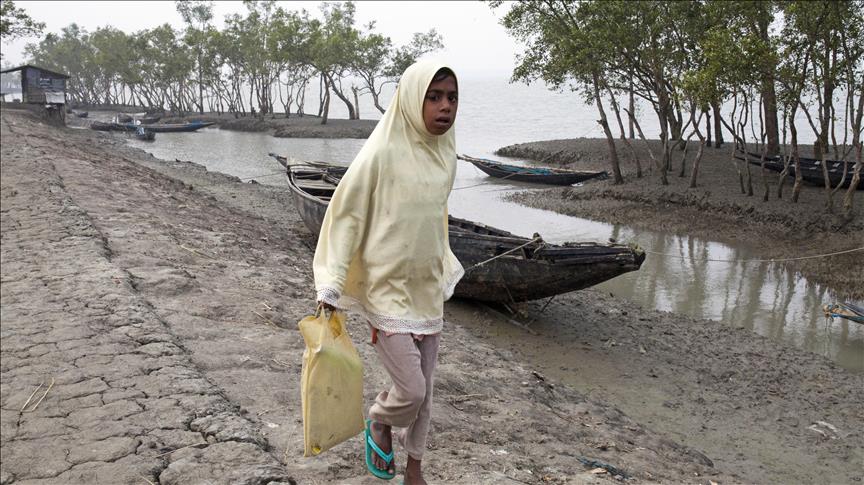Growing carbon emissions could lead to a sea-level rise of about 84 centimeters (cm) by 2100, risking the lives of two billion living in coastal regions throughout the world, a new report released Wednesday by the Intergovernmental Panel on Climate Change (IPCC) warned.
If the sea level rises by even 50 cm, it could lead to the submergence of infrastructure worth $26.9 trillion in 20 port cities that are under the biggest threat, a study IPCC referred in the report, said.
The most significant outcome from the Special Report on the Ocean and Cryosphere in a Changing Climate (SROCC) released by the IPCC, which was prepared by assessing 7,000 scientific papers with input from 104 authors and editors from 36 countries, is that climate change leads to tremendous changes in sea levels affecting oceans, glaciers and marine life.
However, the report shows that all losses can be compensated to a certain level by taking immediate action to cut carbon emissions globally.
The IPCC drew attention to the fact that the Greenland and Antarctic ice sheets are melting, releasing more than 400 billion tonnes of water a year.
The area of the Arctic covered by snow each summer is shrinking by more than 13% per decade while the rate of increase in ocean temperature has more than doubled since the 20th century.
The report said that the sea level has risen by 16 cm so far, as a result of human-inflicted greenhouse gas emissions that are accelerating. With high emissions, the rise would continue to accelerate, with a sea-level rise of 15 mm annually by 2100, which is more than four times as fast as it is today and more than 10 times the rate of the last century.
"This would mean further sea-level rise of about 84 cm by 2100, with an upper estimate of the likely range of 1.1 meters. With rapid emission cuts, the sea-level rise this century would be limited to about 43 cm, that is, it would be roughly halved," the report found.
The sea-level rise is likely to cause some islands to become uninhabitable by the end of the century and risks the lives of two billion living In coastal areas.
Around 20 cities including New York, Tokyo, Bombay, Shanghai, Bangkok and Miami could be at risk.
If high emissions continue unabated, the sea-level rise would continue accelerating even after 2100, by up to 5.4 meters by 2300, the report said.
-Melting glaciers could cut water supplies
According to the IPCC, glaciers will lose more than a third of their mass by the end of the century if emissions do not fall.
Some mountain areas will lose more than 80% of their glaciers by 2100 under high emissions and many glaciers will disappear entirely. As a result, water supply from glaciers in mountain regions will peak and start to decline before the end of the century.
Marine life will be negatively impacted especially with changes to the ocean that are set to continue.
Separate analysis suggests that without emission cuts, ocean acidity will rise by about 150% while the total mass of animals in the world’s ocean will decrease by 15%, and the maximum catch potential of fisheries will fall by up to 24% by the end of the century.
As a result, changes to the ocean are likely to make the world's weather even more extreme. However, these extremes could even accelerate when thawing permafrost releases hundreds of billions of tons of carbon by the end of the century if emissions are not reduced, the IPCC warned.
Humans currently release around 11 billion tons of carbon a year.
Additionally, the loss of snow and ice would also accelerate warming by reducing the earth’s reflectivity. Arctic sea ice is shrinking by about 13% a decade and is expected to disappear entirely during some summers if global warming reaches 2°C, according to the IPCC.
"The consequences of a failure to rapidly cut emissions now would become increasingly clear in the second half of this century. Many people and places would face risks that could not be adapted to while immediate emission cuts could greatly reduce the risks," the IPCC urged.
-Immediate action to cut emissions likely to compensate for some losses
Burcu Ozsoy, associate professor at Istanbul Technical University’s Polar Research Center, said the potential impact for Turkey would be that the sea-level rise could submerge 20 city centers in the country.
Around 30 million people live in coastal cities, including large, densely populated regions like Istanbul and Izmir.
"Not only will coastal cities be negatively impacted by climate change, but also every sector from fisheries to pharmaceuticals will continue to be affected. In the face of such a threat, it is not merely enough to stop harming the climate and the environment, but we also need to work hard on methods to compensate and minimize losses," she said.
Aslı Gemci, a senior expert on environmental policies and climate change at the World Wildlife Fund (WWF) Turkey, said that coastal regions could be exposed to floods, which in turn could lead to a lack of drinking water from the ensuing mix of fresh water and saltwater.
Furthermore, she advised that education and health facilities, as well as tourism destinations, archeological and natural heritage sites, and areas of cultural significance could be at risk of submersion.
“We should take urgent action against these risks, but without emission reductions, any advancement against the sea-level rise would not be enough," she warned.
Gemci suggested that Turkey reduce its use of fossil fuels to cut emissions while investing more in renewable energy, the costs of which are declining continuously thanks to developing technology.
The IPCC is an organization of governments that are members of the United Nations or the World Meteorological Organization. The IPCC currently has 195 members.
By Nuran Erkul Kaya
Anadolu Agency


